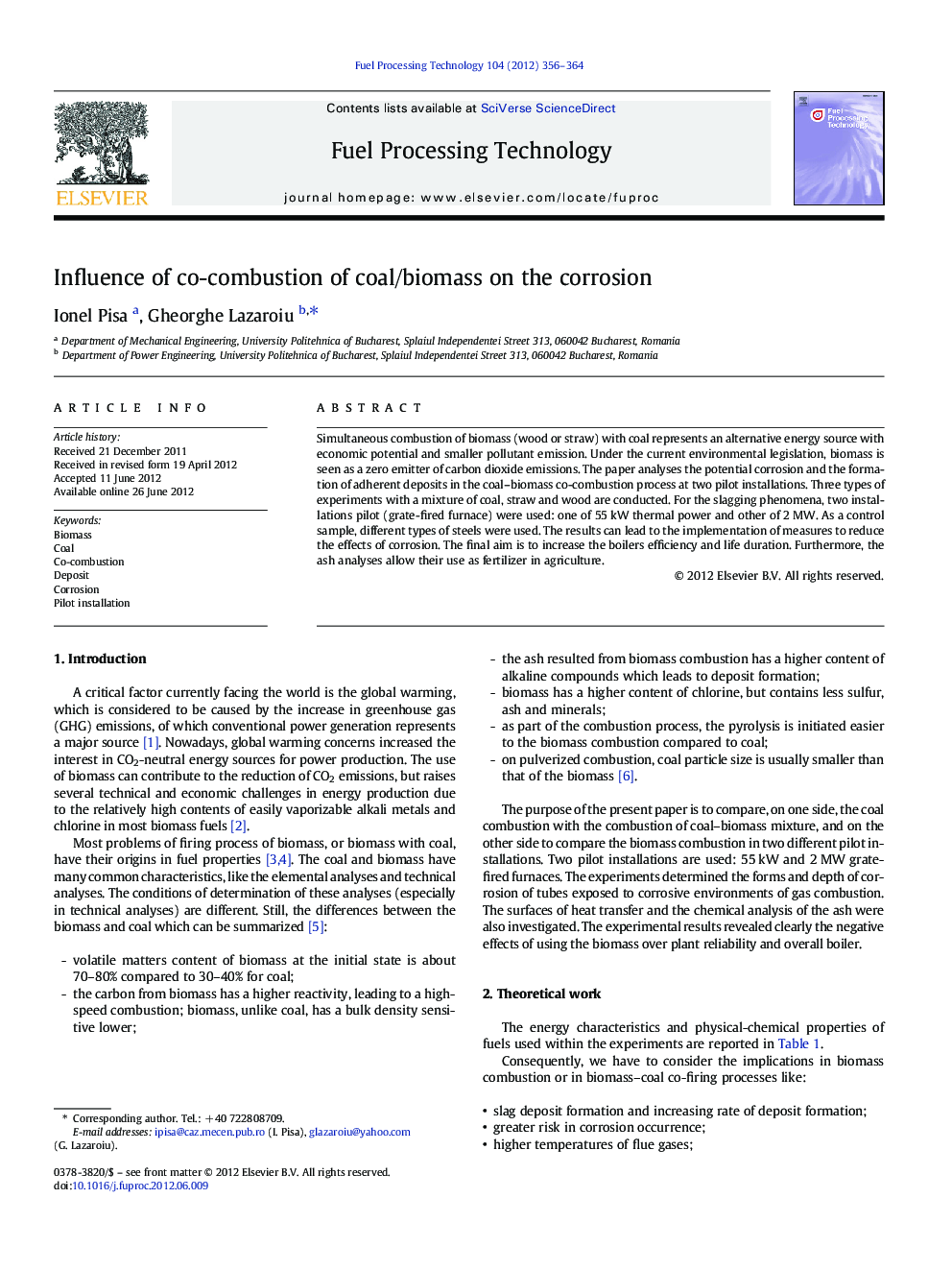| Article ID | Journal | Published Year | Pages | File Type |
|---|---|---|---|---|
| 210289 | Fuel Processing Technology | 2012 | 9 Pages |
Simultaneous combustion of biomass (wood or straw) with coal represents an alternative energy source with economic potential and smaller pollutant emission. Under the current environmental legislation, biomass is seen as a zero emitter of carbon dioxide emissions. The paper analyses the potential corrosion and the formation of adherent deposits in the coal–biomass co-combustion process at two pilot installations. Three types of experiments with a mixture of coal, straw and wood are conducted. For the slagging phenomena, two installations pilot (grate-fired furnace) were used: one of 55 kW thermal power and other of 2 MW. As a control sample, different types of steels were used. The results can lead to the implementation of measures to reduce the effects of corrosion. The final aim is to increase the boilers efficiency and life duration. Furthermore, the ash analyses allow their use as fertilizer in agriculture.
► Potential corrosion and formation of adherent deposits. ► Coal–biomass co-combustion process at the pilot installation (2 MW). ► Dynamics of NOx generation during the co-combustion of coal and biomass. ► Proposed methods related to the reduction of NOx concentration.
